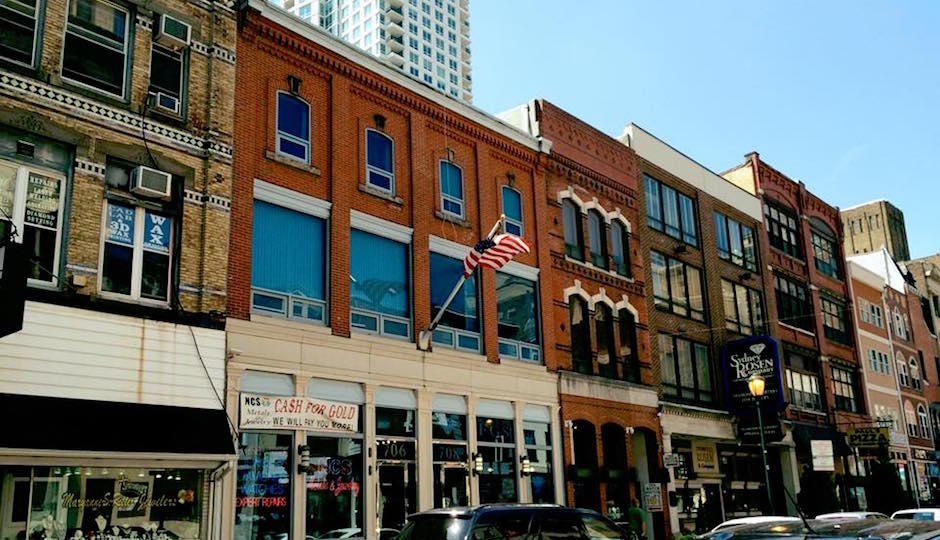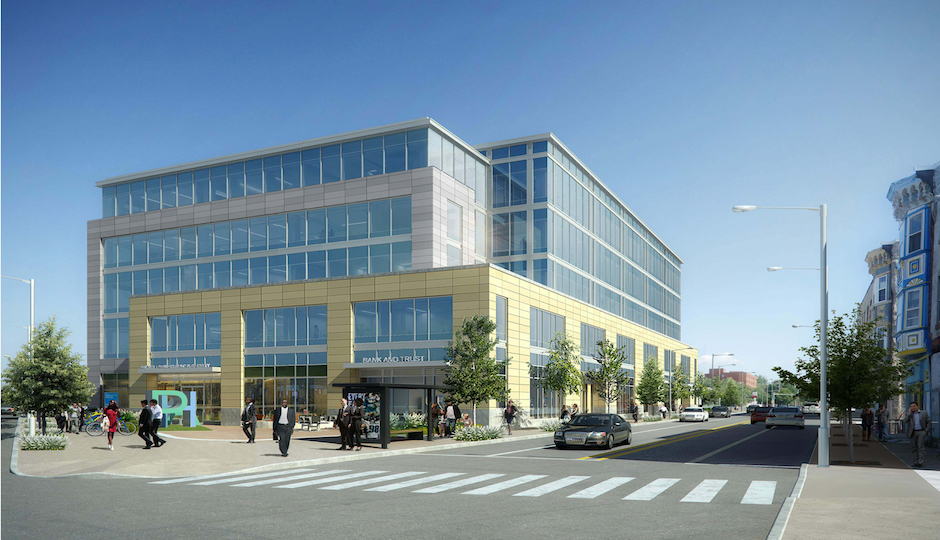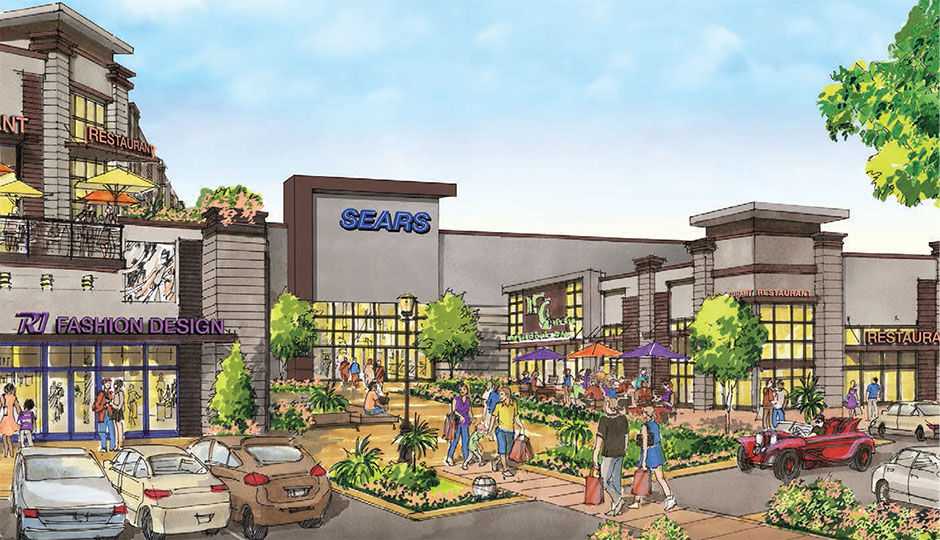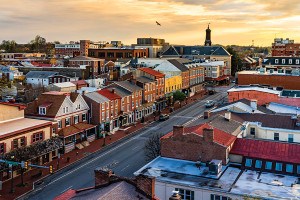The Top 5 Real Estate Stories of 2016

We still don’t know what Toll others’ proposed mixed-use tower on Jewelers Row will look like, but we do know its facade won’t look like this, and that has the city’s preservation community up in arms. | Photo: Oscar Beisert
As we close the book on 2016, let’s take a look back at the year in real estate and development. What were the stories that got people’s attention this year? Here are our picks:
Toll Brothers goes tall on Jewelers Row and sets off a preservation fight.
A few years ago, Toll Brothers, the Horsham-based luxury home builder, decided to enter the urban development game with its City Living division. Urbanist critics loved to fault the builder’s Philadelphia projects for their notable lack of urban features like density and mixed uses. So when the company announced it wanted to build an apartment tower with street-level retail in Philadelphia, everyone cheered, right? Wrong, because the tower would replace three buildings on historic Jewelers Row. The fight to preserve the buildings pitted the preservation community against just about all of the property owners on the 700 block of Sansom Street, who see the apartment tower as giving their businesses a shot in the arm from a ready-made customer base. (Or so it appeared from the testimony delivered to the Philadelphia Historical Commission in September, when it opted to punt on the issue of preserving the endangered buildings. The Jewelers Row merchants who appeared at this month’s Washington Square West Civic Association Zoning Committee meeting sang a different tune altogether.) Toll can build this project by right under the lot’s zoning, but Toll has indicated it wants to work with the community to shape a project everyone could live with. Right now, it looks like that project has yet to emerge.

The proposed new headquarters for the Philadelphia Housing Authority in Sharswood. | Rendering: BLTa, courtesy Philadelphia Housing Authority
The PHA continues to press on in Sharswood, and critics continue to take shots at it.
A Philadelphia Housing Authority press release called 2016 “a very fulfilling year for PHA.” This, in the same year the agency described 126 layoffs as a “restructuring” that “means thousands more households served,” a headline that probably qualifies for Best Spin of the Year. Some of those households will live in the first 57 apartments to be developed under the agency’s huge Sharswood/Blumberg Neighborhood Transformation Plan, the ribbon for which was cut Nov. 16. The PHA also announced that it had found an operator for the supermarket called for in the plan, and local homeowners got something to hang hope on also in the form of a Habitat for Humanity/PHA partnership that will assist them with fixing up their homes. But the heavy lifting on this project remains in the future, and the road ahead remains rocky. Future funding depends on the presence of an “anchor institution” — that would be the PHA itself, which will move its headquarters to Sharswood as part of the plan; the agency signed a $45 million contract to build it this past August. But the Civic Design Review panel tossed brickbats at its design when the project went before it in the fall. And local activists, most notably real estate broker Judith Robinson, continue to criticize the agency for its huge land grab that, she and others assert, denied African-American property owners a chance to cash in on their investments right at the point when organic redevelopment in the neighborhood was picking up. Whether the PHA will get the money to build all of the 1,200 units of housing it took the land for remains very much an open question.

What the former Granite Run Mall will look like after it’s been demalled. | Rendering via BET Investments
The region’s shopping malls retool – or even de-mall.
The gap between rich and poor widened on the brick-and-mortar retail front as well this year, as online shopping continues to undermine the foundations of the traditional shopping mall. While strong malls with established reputations for luxury and fashion such as King of Prussia built on their strengths — a huge new connector that made the two malls one and added a slew of luxury boutiques opened in August — other malls in the region sought new strategies to ensure their survival. In the case of nearby Plymouth Meeting Mall, that strategy relies on entertainment and leisure activities, with a new Legoland Discovery Center as a key “anchor tenant.” But the new owners of Granite Run Mall outside Media opted to follow the lead of the former Echelon Mall in Voorhees, N.J.: Instead of trying to resuscitate it, they’re tearing down much of it and replacing it with a mixed-use development that will add offices, apartments and entertainment venues to the mix. The presence of a supermarket on mall property already should help attract new residents.
The real estate community gets a voice on Council.
For the first time since…well, since no time we can recall, someone who actually knows about real estate got elected to Philadelphia City Council. Councilman-at-Large Allan Domb runs one of the city’s best-known brokerages and property managers, and as chair of the Greater Philadelphia Association of Realtors, the “condo king” offered up many suggestions to further rev up the redevelopment engine. One of the most notable: a proposal to double the length of the property tax abatement on lower-priced homes from 10 to 20 years. At this year’s ThinkFest, Domb described how he planned to make getting the city’s balance sheet in order one of his signature issues.

Rental construction took off this year, most of it high-end projects like 1919 Market. | Rendering: Barton Partners
New apartment buildings grow like weeds, and their growth has made affordable housing a live issue.
The city housing market especially continued to recover smartly from the bursting of the housing market bubble, with some metrics indicating house values hereabouts have passed their pre-bubble peaks. But the real action this year has been in the multifamily sector, with new apartment towers being completed at what seems to be a breakneck pace. 1919 Market added apartment-dwellers to the Market Street West residential mix, and 2116 Chestnut added an exclamation point to the western reaches of Rittenhouse Square. Other projects now under way include 1213 Walnut, The Bridge at 205 Race Street and the new apartment tower at 17th and Vine streets being built by the Church of Jesus Christ of Latter-day Saints, and several other projects continue to progress towards groundbreaking, including Lincoln Square at Broad and Washington and the tower that will replace the Boyd Theater on Chestnut.
But all of this action is taking place at the upper end of the market, and it has brought the issue of affordable rental housing to the forefront. Reports on current market conditions produce dueling statistics on rent trends, with some finding modest increases and others modest declines, but a just-released study by the Federal Reserve Bank of Philadelphia found that the city’s stock of affordable apartments, which it defined as those renting for $750 a month or less, has fallen by one-fourth since 2000. And there are signs that both developers and advocates are beginning to take notice of an emerging affordability problem in one of the most affordable housing markets on the East Coast: The Bridge’s developer is making 10 percent of his building’s units affordable, and a local low-income-housing advocacy group, the Philadelphia Coalition for Affordable Communities, has just written a letter to Mayor Jim Kenney and Philadelphia City Council urging both to consider levying an “affordable housing impact fee” on new market-rate development to generate funds to preserve and expand affordable housing programs in the city.
Follow Sandy Smith on Twitter.


